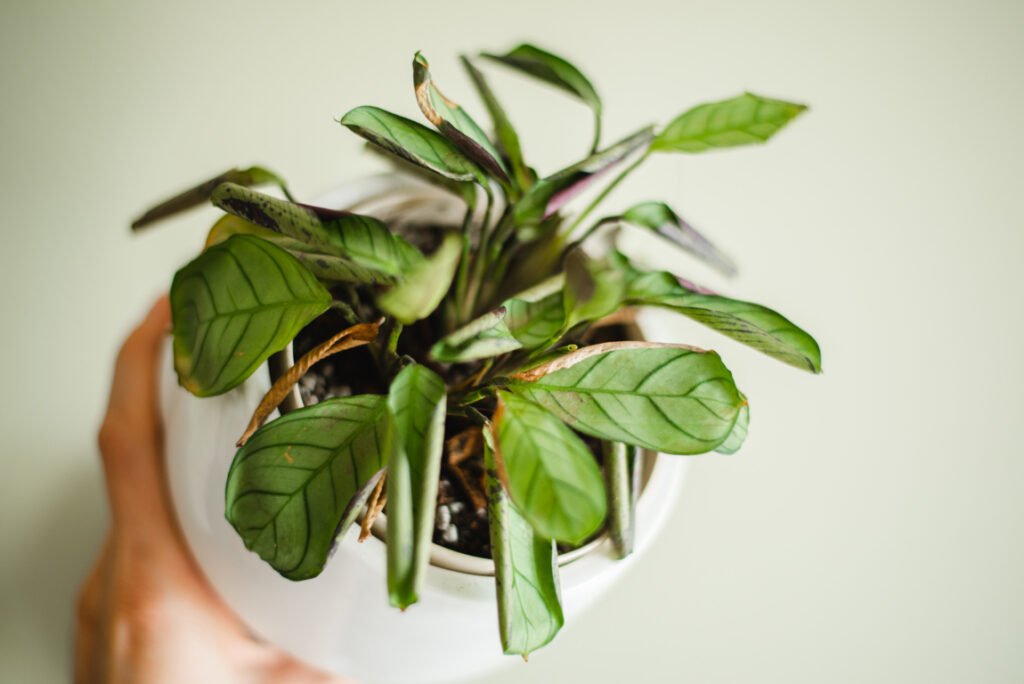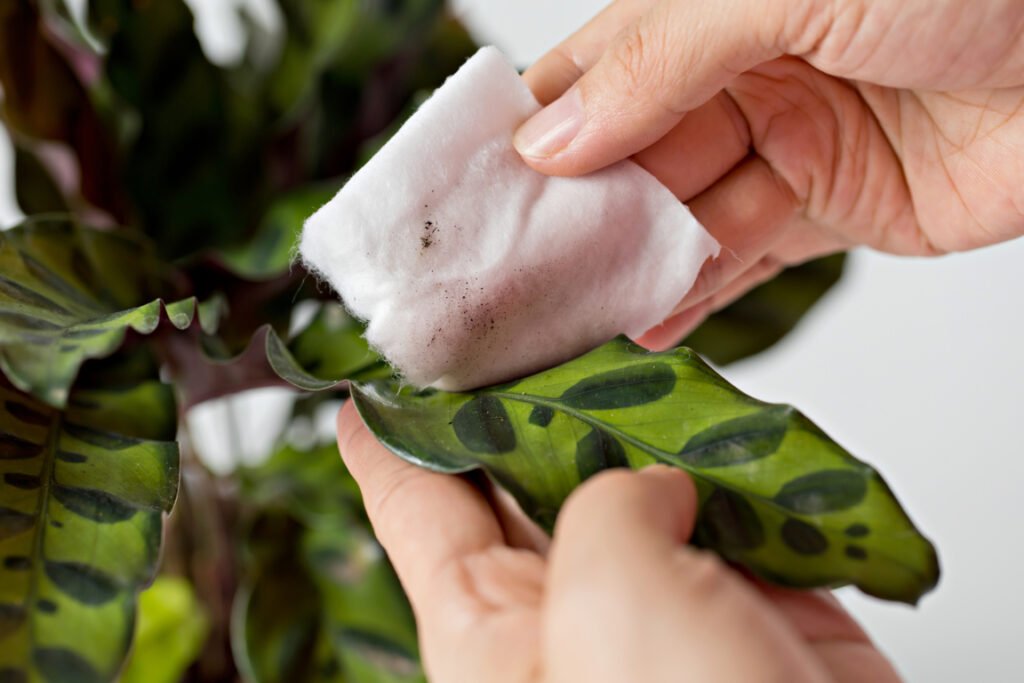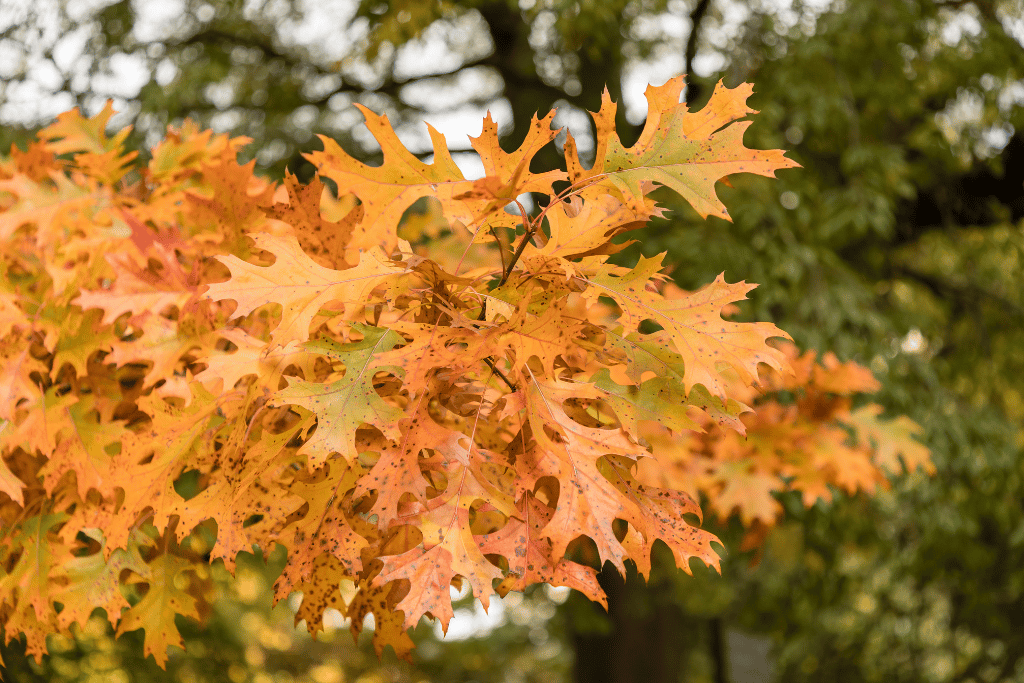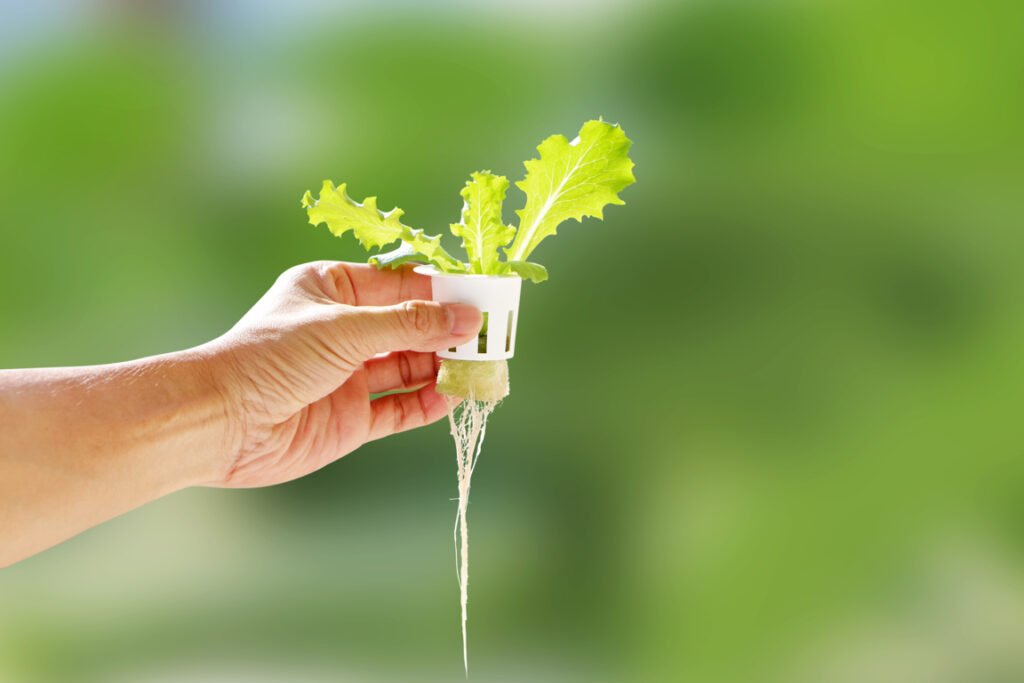
Prayer plants are famous for their natural reflex to fold upright at night. They resemble folded hands in a praying position. However, not all the leaf curls are normal. Prayer plant leaves curl inward as a biological response to stressful conditions. Most of these stresses are warnings for much deeper troubles.
Curled prayer plant leaves indicate an unhealthy growth cycle. Some causes of curling include dry soil, poor water quality, and unsuitable environmental conditions. Other maintenance issues, such as incorrect plant positioning, repotting, and pest attacks, can also cause curling in prayer plants.
This article will cover the causes and solutions for curling and browning prayer plant leaves. Most of these problems are solvable with proper maintenance and care. However, identifying the problem can help you solve it better.
Let’s get started!
7 Reasons Why Prayer Plant Leaves Curl
Prayer plant leaves curl for several reasons. Identifying the specific reason can help you treat it effectively. The following are some of the factors that cause curling in prayer plant leaves:
1. Dry soil conditions
Prayer plants are of tropical origin and hate dry soil conditions. They consume a lot of water and thrive in wet environments.
Soil dryness is mainly due to underwatering. Without water, leaves will curl inward to avoid further moisture loss. This also causes their leaves to become dehydrated, crisp, and brown around the edges.
Solution
You can avoid soil dryness by watering your plants regularly.
Bottom-watering is an excellent method to wet the soil thoroughly. You can try bottom-watering your prayer plants by using the following steps:
- Take a tub or container with two or three inches of water
- Now, place the plant pot inside the tub without its saucer
- Let its drainage holes absorb water from the bottom
- Let the plant pot be in the same setup for 45 minutes or until the top layer of the soil becomes moist
For extra-quick hydration, opt for top-watering. Be gentle while you pour water from the top. Check for proper draining and avoid overwatering. Make it a routine to water prayer plants thoroughly every two or three days.
You can also add moisture-retention elements, like peat, sphagnum moss, etc., to your soil mix. This helps to keep your soil moist for a longer period of time.
2. Poor water quality
Are your prayer plant’s leaves curling inward even after following a regular watering regime? It’s high time to investigate your water quality. This problem is typical when you use tap water to hydrate your plants.
Tap water contains many toxic chemicals like chlorides, fluorides, and salts. These can harm your plants. They build up on the surfaces of the roots, reducing absorption. As a result, prayer plant foliage becomes burned, brown, and curly.
Solution
Avoid using tap water to hydrate your plants. Rainwater is your best irrigation ally. But, in the absence of rain, opt for filtered or distilled water. Filtering helps you remove chlorine components from your tap water.
However, I’ve got an affordable solution if you don’t want to spend money on a filtering setup.
Thankfully, chlorine is highly volatile. It can evaporate into the atmosphere without any difficulty. You can remove chlorine from your tap water by leaving it open in a pot overnight. By morning, most of the chlorine compounds will have evaporated.
3. Extreme temperatures
Prayer plants are incredible houseplants. They thrive best between 65 and 80 degrees Fahrenheit (aka the average room temperature). Any drastic alteration in temperature levels can cause adverse reactions in your plant.
Temperatures below 60 degrees Fahrenheit can damage the foliage of your prayer plants. The leaves become brown and curl up.
A frost begins once the temperature drops to 50 degrees Fahrenheit or below. This may shock plants and result in leaf shedding.
Temperatures above 80 degrees Fahrenheit will also damage the leaves. The water evaporation rate is high at this temperature. The prayer plant’s leaves begin to curl up as a natural defense. As a result, only a minimal surface area is susceptible to heat.
Solution
Avoid exposing your prayer plants to extreme temperatures. Keep them inside when the temperature outside is dangerously high.
While growing them indoors, consider their sensitivity to sudden temperature variations. Avoid placing your prayer plants near drafty spots like window openings or vents. Warm air from the vents can dry the leaves and curl them inward.
4. Direct sunlight
The tropical nature of prayer plants directs us to our next concern—direct sunlight.
Prayer plants grow at ground level below tree canopies in their natural habitat. They thrive in minimal lighting conditions. The deep colors on the underside of the leaf blade help retain sunlight. Thus, direct sunlight can cause prayer plant leaves to curl inward to avoid further exposure.
Too much sunlight can burn the leaves. It can make them yellow or brown. Most often, such leaves lose their moisture and wither away.
Solution
Locate your prayer plant in a shady spot when you grow it outdoors. As for indoors, avoid placing them near south-facing windows. The heat from the south is relatively intense and harms the foliage.
5. Low humidity
Prayer plants thrive in high humidity. The summer months, with their scorching heat and dry air flow, can put your plants’ health to the test. To avoid diseases, protect your plants from the sun and move them to a cooler location.
Use a hygrometer to check the humidity levels. Aim for 50% to 60% humidity when you grow them indoors. Lack of moisture in the air can dehydrate the leaves and result in curling.
Solution
Maintain high humidity by regularly misting the plants or using a humidifier. Misting increases the humidity level around the plants by spraying tiny droplets of water over them. Make sure to spray water on both sides of the leaves for better results. You can also place the plant pots over a pebble tray to regulate air moisture levels.
6. Root problems
Being root bound indicates that your plant’s root system has exceeded its current container. You can notice it almost immediately. Roots will grow from the plant pot’s drainage hole and on their top rims.
A root-bound plant exhibits other symptoms in addition to curling. Symptoms include stunted growth, smaller-sized younger leaves, withering, and yellowing of the foliage.
This happens when the roots are constrained and due to growth. As a result, there is a need for more air, water, and food.
Solution
Prayer plants can cope with being root-bound. However, they won’t thrive. Help your prayer plants improve their growth by repotting them when needed.
- Transfer your prayer plants to a bigger pot.
- Ensure the plant pot has adequate drainage holes to avoid water logging.
- Choose a well-draining soil to aid in moisture retention without making them soggy.
- You can include moisture-retention elements and other fertilizers in your potting mix.
Wait for the growing season to begin before beginning repotting. This helps encourage faster growth and better use of the new container. Repotting late in the growing seasons can result in slow growth. As a worst-case scenario, you might over-water them if the plant pots are too big compared to the root’s absorption capacity.
7. Pest problems
Like all house plants, even prayer plants are vulnerable to various pest-related problems. Scale, mealy bugs, and root mealybugs are the three most common pests. Pests like fungus gnats and spider mites are less prevalent.
Pests like mealybugs and scale harm plants by draining plant fluids from the leaves, causing weak, wrinkled, and occasionally curled and bent plants.
Solution

Use neem oil or store-bought insecticides to get rid of the pest. It is essential to practice regular foliage care. Mist or wipe the prayer plant leaves with a damp cloth to avoid future infestations.
Other Reasons for Prayer Plant’s Leaves Curling
Not all the curly prayer plant leaves are concerning. Sometimes they curl as a natural movement or just as a chronological development. Here are a few usual reasons for curling prayer plant leaves.
Natural movement
Did you ever notice your prayer plant’s leaves curling at night? This is because of their natural behavior. These plants raise or uplift their leaves during the night, gaining credit to their name, ‘prayer plant.’
The leaves curl slightly during the process to assist in saving moisture. However, by morning, the prayer plant’s leaves will flatten again. This is normal and should not worry you.
New growth
New leaves emerge curled and may remain curled for some time before unfolding. Once again, this is common and happens in many other plants. So don’t be alarmed if the fresh leaves of your prayer plant curl– it’s perfectly normal.
Transplant shock
Your plants may experience shock if you repot, transplant, or relocate them. As a result, the leaves may bend, droop, have brown tips, or drop. When transplanting them, avoid damaging the roots. They are still getting used to their new surroundings. So give them some time to catch up with the new environment. And also, remember to keep the soil moist at all times.
Maturity
The leaves become yellow and brown as they mature. As a result, they may become frizzy and ruffled. This is also common.
Prayer plants are fascinating houseplants. They are famous for their natural movements curling their leaves at night. However, prayer plant leaves curling inward can also indicate other underlying stresses and problems. Thankfully, you can resolve most issues with proper care and maintenance. Consider properly examining your prayer plants before you decide to treat them.
Frequently Asked Questions (FAQ)
Will my prayer plant’s leaves uncurl?
Yes, the prayer plant’s leaves will uncurl with proper maintenance and care. Identify the cause and treat it appropriately. If you sense soil dryness, fix it immediately by hydrating the plants. Over a couple of weeks, you can expect the curled leaves to unfurl and return to their original shape.
Do prayer plants curl up at night?
Prayer plant leaves curling at night is natural. During the day, prayer plants flatten their leaves to expand the leaf spread to maximize sunlight and moisture absorption. They curl upright during the night to avoid moisture loss. This inward curling prevents water droplet evaporation.
Why are the leaves of my prayer plant curling?
Prayer plant leaves curl for several reasons. Even though curling is a natural reflex, underlying causes like soil dryness, unsuitable environmental conditions, and improper maintenance can also cause foliage curling in prayer plants.
Why are my prayer plant’s leaves curling after repotting?
Repotting or transplanting the prayer plants from one pot to a new one can be difficult. During repotting, new soil PH, soil moisture level, and root damage can stress the plant. The sudden change in surrounding soil conditions can shock the plant and result in foliage curling.



